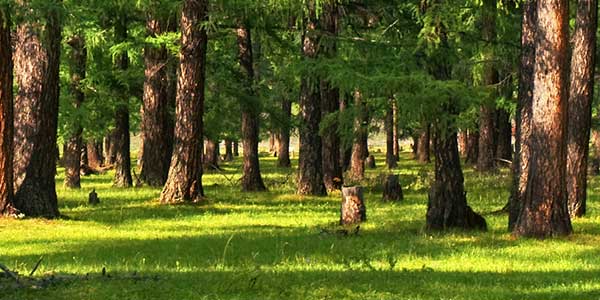A defensible space is an area immediately surrounding a home usually up to a distance of 100-200’ that has been treated to reduce the natural fuels and brush in order to reduce the intensity of an approaching wildfire.
Why Create A Defensible Space?
Creating a defensible space around your home gives the structure a greater chance of naturally surviving a wildfire, but it also gives firefighters an area to stage their operations and try to protect your home/ property.
What is a Defensible Space Plan?
A Defensible Space Plan is an outline of the steps needed to create a defensible space around your home and property. A typical Defensible Space Plan includes, but is not limited to:
- Thinning of trees and shrubs around the home to create adequate crown spacing between trees
- Mowing of grasses/weeds around the property
- Removal of ladder fuels which are any flammable materials directly underneath or attached to the tree such as bushes, grasses, wood piles, or branches hanging below 10’, or any other flammable material that could allow a ground fire to climb into the tree canopy
- Removal of any non-organic flammable material next to your home
- Any ongoing maintenance needed for your property after the initial mitigation
Insurance companies are looking to see that an expert in the field of fire mitigation has visited your property and assessed its level of exposure. Qualifying experts are typically fire departments, state and county foresters, and fire mitigation contractors. These experts can supply a report to your insurance agent stating the work required to bring your property into compliance with Colorado State Forest Service (CSFS) Guidelines. These guidelines are the leading method used for fire mitigation purposes in Colorado.How do I know if the person at my property is knowledgeable in the creation of my home’s Defensible Space?
If you hire a fire mitigation contractor for your property, check to make sure they:
- Can provide references
- Are an ISA Certified Arborist or have one on staff
- Can provide proof of insurance
- Have been in business for at least three years or more
State/county foresters can also be a great resource. They generally have education or experience requirements and may be required to submit their plans to county governments that are in compliance with their standards. Fire departments do not always require extensive education among their staff members, but often have knowledgeable firefighters that are expected to conduct on site inspections. You will want to check with your local fire department to assure that they offer this service.
Is there a cost associated with a Defensible Space Plan?
This will depend on how much assistance you need and whether you or not you need to submit your plan to a county forester or your homeowner’s insurance agent. If so, there may be a cost associated with the production of a report, but always be sure to ask about any costs or obligations before you sign a contract.
What if I want to do the work myself? Can I still have a Defensible Space Plan?
Defensible Space Plans can usually be purchased even if you want to complete the work yourself, but the price and restrictions will be determined by the company you choose to create the plan. Some companies, including Splintered Forest, are willing to come to your home and provide a Defensible Space Plan and re-inspect the property after you have completed the work detailed in the plan.
Learn more about creating a defensible space plan.
Get informed about fire mitigation strategies.
What can I do if I still have questions concerning fire mitigation around my property?
Call your local fire mitigation expert, local fire department or a county forester. Additional details can also be found at www.splinteredforesttreeservices.com or by calling 303-819-9840.

